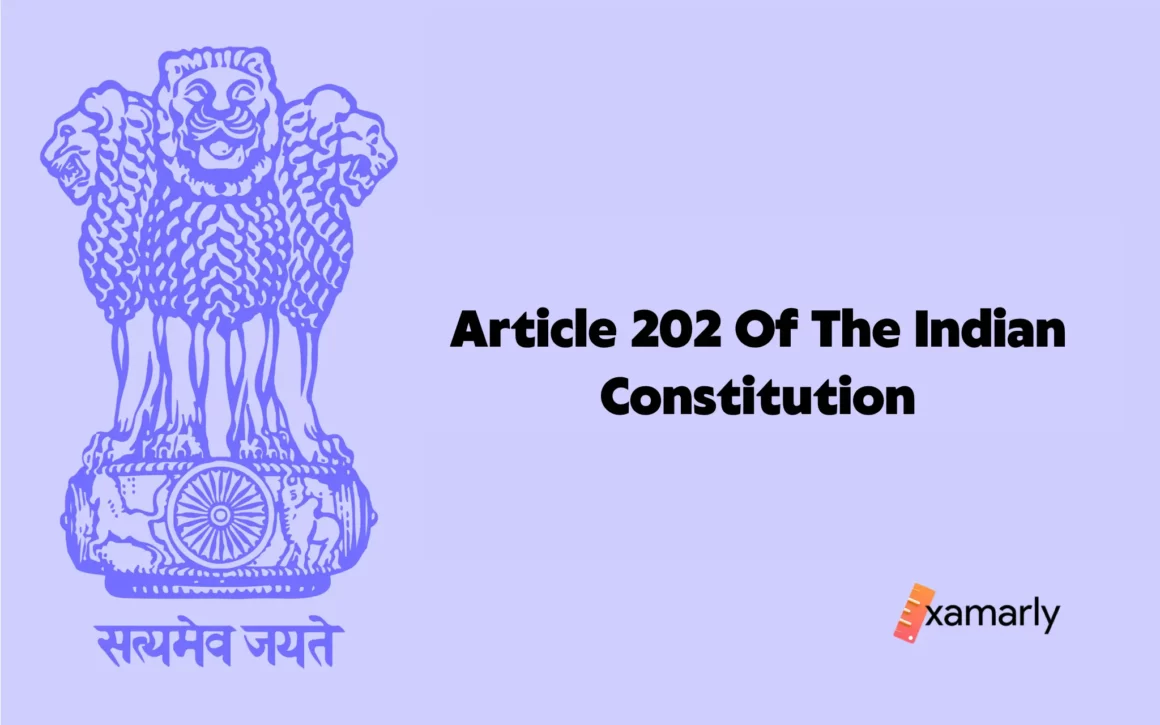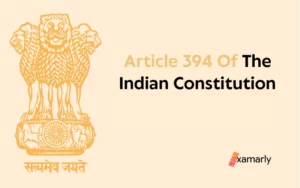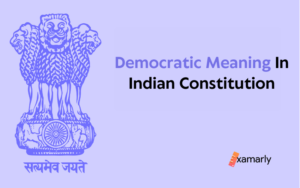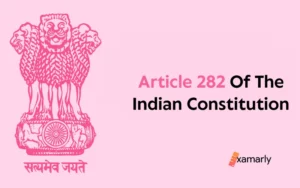An Outline
Article 202 of the Indian Constitution explains how the Annual Financial Statement of a State Legislature is made, what provisions and procedures are followed while making one, and what data an Annual Financial Statement should include.
The Governor of a State gives permission to introduce before the House or Houses of the Legislature of the State a Statement of the estimated receipts and expenditures of the State for the next financial year. This estimated statement of receipt and expenditure for a financial year is named in the Constitution as the “Annual Financial Statement”, and is commonly known as “Budget”.
Let’s dig deeper to know more about the Annual Financial Statement.
Article 202 Of The Indian Constitution – In Detail
Article 202 of the Indian Constitution consists of three clauses that mention in detail, the contents of the Annual Financial Statement. Let’s take a look at what the clauses state for further understanding.
You may also want to read – Article 201 Of The Indian Constitution
Clause 1 – As it is & Explained
(1) The Governor shall in respect of every financial year cause to be laid before the House or Houses of the Legislature of the State a statement of the estimated receipts and expenditure of the State for that year, in this Part referred to as the “annual financial statement”.
The first clause of the Article 202 of the Indian Constitution basically says, when it comes to the state’s annual budget, the Governor shall ensure that an “Annual Financial Statement” is presented before the House or Houses of the State Legislature at the end of each financial year. The Annual Financial Statement shall contain all the estimated receipts and expenditures of the State for a year.
Clause 2 – As it is & Explained
(2) The estimates of expenditure embodied in the annual financial statement shall show separately—
(a) the sums required to meet expenditure described by this Constitution as expenditure charged upon the Consolidated Fund of the State; and
(b) the sums required to meet other expenditure proposed to be made from the Consolidated Fund of the State; and shall distinguish expenditure on revenue account from other expenditure.
The second clause of the Article 202 of the Indian Constitution defines what the yearly financial statement should contain. It must separately include projections of expenditures that fall under the below mentioned categories:
- the money needed to cover expenditures defined by the Constitution as expenditures that are paid out of the Consolidated Fund of the State; and
- the money required to meet all other expenditures not defined by the Constitution that are to be made from the Consolidated Fund of the State. The statement must distinguish between the expenses on the revenue account and other expenditures.
Clause 3 – As it is & Explained
(3) The following expenditure shall be expenditure charged on the Consolidated Fund of each State—
(a) the emoluments and allowances of the Governor and other expenditure relating to his office;
(b) the salaries and allowances of the Speaker and the Deputy Speaker of the Legislative Assembly and, in the case of a State having a Legislative Council, also of the Chairman and the Deputy Chairman of the Legislative Council;
(c) debt charges for which the State is liable including interest, sinking fund charges and redemption charges, and other expenditure relating to the raising of loans and the service and redemption of debt;
(d) expenditure in respect of the salaries and allowances of Judges of any High Court;
(e) any sums required to satisfy any judgment, decree or award of any court or arbitral tribunal;
(f) any other expenditure declared by this Constitution, or by the Legislature of the State by law, to be so charged.
The third clause of Article 202 of the Indian Constitution mentions that it is essential that the following expenditures be charged to the Consolidated Fund of each State:
- the Governor’s salary and other allowances, as well as any additional expenses directly related to his office
- the salaries and allowances of the Speaker and the Deputy Speaker of the Legislative Assembly and, of the Chairman and the Deputy Chairman of the Legislative Council when a State has a Legislative Council
- money required to repay a debt for which the State is responsible, such as interest, charges for a sinking fund or for redemption, as well as other expenditures required for taking loans and the service, including the redemption of debt
- any expenses incurred with regard to the salaries and allowances of judges serving in any High Court
- any amount necessary to settle any judgement or order given by any court or by the arbitration council
- it also includes all other additional expenditures that are declared by the Constitution or the State Legislature
Conclusion
Article 202 of the Indian Constitution states that it is the duty of the Governor to lay down the estimated receipts and expenditures of the State for a financial year. It is referred to as the Annual Financial Statement in the Constitution.
All the estimated expenditures of a State that are supposed to be paid out of the Consolidated Fund have to be mentioned in the Annual Financial Statement whether they are specified in the Constitution or not.
Article 202 of the Indian Constitution gives us a clear picture of the various expenses of the Government and where the money is pulled out from.
FAQs Related To Article 202 Of The Indian Constitution
What is Consolidated Fund of the State?
The Fund into which the revenues received by the State Government, loans raised by the Government by the issue of treasury bills, loans or ways and means advances as well as the money received by that Government in repayment of loans are credited is referred to as Consolidated Fund of the State. It is the fund from which all of the expenditures of the State Government are covered.
What is Financial Year or Fiscal Year?
The period of 12 months when the Government, businesses and other organizations calculate their budgets, profit, and losses is called a Financial Year. It starts on 1st April and ends on 31st March.
What is another word for Annual Financial Statement?
Annual Financial Statement is commonly known as “Budget”.
What are the two kinds of estimated expenditure made out of Consolidated Fund of the State?
The Annual Financial Statement mentions all kinds of estimated expenditures for a year, the ones that are:
– specified in the Constitution
– not specified in the Constitution






